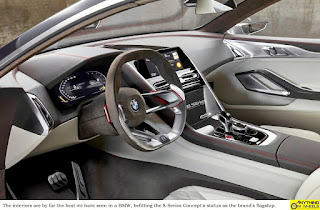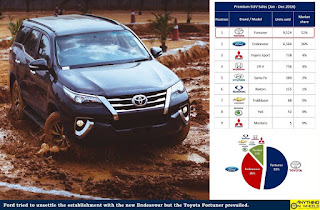One car-manufacturer that always seemed to have the right products that could have made a mark in India was Kia. It’s a pity they didn’t bother to set shop here all these years. For those who do not know much about them, Kia is South Korea’s oldest car-manufacturer and, of late, one of the world's fastest-growing too. Partly owned by Hyundai, the two brands share a ‘Volkswagen-Skoda’ kind of relationship when it comes to designing and developing their products. Cars from the two brands share platforms, engines, transmissions and pretty much everything that can be shared.
Now that Kia are headed here, speculations are rife on the cars we could buy from them, right here in India, in about two years from now.
An India-specific compact sedan and a compact SUV are on the cards but that apart, Kia has been tight-lipped on their game plan for our market. That gives us a chance to come up with a wish list of our own. Kia might never launch them here but, if we were the product planners at their Indian subsidiary, these are the vehicles that would be India-bound.
Optima Hybrid
You didn't see this coming, did you? To make it big in India, you need a competent hatchback. For that to sell, a widespread dealer network is essential. Dealers won't be on board without a product to sell. That's where the Optima Hybrid steps in.
A direct rival to the Toyota Camry and Honda Accord, the Optima could be the perfect launch-pad and image-builder Kia needs. The Optima is a stylish, fully loaded entry-luxury sedan and in its ‘Hybrid’ guise, more than a match to its Japanese rivals in terms of technology. Before Kia gets their mainstream models rolling out of their assembly line, the Optima Hybrid can be imported as a CBU to keep the dealers happy. Who knows, a bit of a helping hand from Hyundai could even open up the CKD route.
Sure, that's an almost-abandoned segment for a debutant brand to step into but Toyota and Skoda have proved you could be successful if the product and positioning are right. And before you bring up brand image and Kia’s lack of it, remember we are a country where Skoda is placed above Volkswagen on the image pedestal!
Expected Price: INR 28 - 30 Lakhs
Rivals to watch out for: Toyota Camry Hybrid, Skoda Superb, Honda Accord Hybrid
Picanto
Now, this is where the typical hard-hitting that Korean brands are famous for begins. If Kia plays the right cards, the Picanto could do to Kia what the Santro did to Hyundai.
Chic looks, no-nonsense interiors, the peppy 1.2-liter Kappa petrol, the frugal 1.2-liter U diesel and road manners that are said to be a cut above Hyundai - the Picanto has all the attributes to impress the discerning Indian small car buyer. That Hyundai stretched the wheelbase of the i10 specifically for India and slapped a 'Grand' prefix is common knowledge. Kia could mirror the strategy with the Picanto, making it a spacious and comfortable car for Indian families.
Hatchbacks are dime a dozen in the market but this little Kia has got what it takes to stand out, we think. The previous-generation Picanto was spied testing in Chennai more than once which proves Kia is seriously considering this for the Indian market. If not, they better do.
Expected Price: INR 4.5 - 6.5 Lakhs
Rivals to watch out for: Maruti-Suzuki Swift, Hyundai Grand i10, Ford Figo
Rio
Not so long ago, hatchbacks priced above INR 5 Lakhs were considered a no-go for India as there were more than one example of expensive hatchbacks not moving off the showroom floors. Hyundai busted the myth with the i20 and Maruti-Suzuki is rewriting history with the Baleno. With the Rio, Kia can join the party too, albeit a bit late.
Sharing it’s platform, chassis and powertrain with the i20, the Rio has got the basics covered. All it needs is proper positioning, a value-for-money price tag and a strong marketing push to break through the minds of potential premium hatchback customers. The design might need a bit of tweaking though, as the new Rio that just debuted globally might end up being too bland for Indian tastes.
Will Kia hit gold in a segment that has failed to reward Honda and Volkswagen, brands that enjoy an enviable brand reputation in India? It’s tough, obviously, but it isn’t impossible. If Hyundai can do wonders with the i20, why can’t Kia?
Expected Price: INR 6 - 8 Lakhs
Rivals to watch out for: Maruti-Suzuki Baleno, Hyundai i20, Honda Jazz, Volkswagen Polo
Sportage
SUVs are a rage in our country and Kia cannot afford to make do with just an India-specific compact SUV in its lineup. Well, they don’t have to, with the Sportage offering an excellent option to embellish the lineup that's tough to ignore.
Over the last two decades, Kias have come a long way and the Sportage is a shining example of that evolution. From being an anonymous-looking, Mazda-based SUV of the past to the radical-looking head-turner that it is today, it’s been quite a journey for the Sportage. With more than adequate space for five, a laundry list of standard features and a price tag that possibly slots in just below the Hyundai Tucson, the Sportage has a sure shot at success.
That said, Kia shouldn’t forget that the Tucson isn’t doing very well in India and one possible reason is its ambitious pricing. Kia sure would not be wanting to miss out from making it to the shopping list of premium customers.
Expected Price: INR 18 - 22 Lakhs
Rivals to watch out for: Hyundai Tucson, Honda CR-V
Forte
This is a gamble. A dying segment, competition that has all but given up, similar-priced SUVs and crossovers ruling the roost - that isn’t a nice place to step in. Not at all. But, Hyundai hasn’t given up yet and the new Elantra seems to be doing a good job. If Kia’s top bosses have the same thought process, the Forte could be here as well.
Among the best-looking premium midsize sedans we have seen in a long time, the Forte can take up the space vacated by the erstwhile Honda Civic in India. Stylish, spacious and feature-loaded, the Forte has all but one of the attributes the once-popular Civic had. What’s missing, you wonder? The Forte is nowhere as fun to drive as the Honda, if international reviews are anything to go by. That hardly matters though, given the fact that the segment’s two best-sellers aren’t known for their handling prowess.
The Forte might not end up being a smart business decision for Kia if it makes it here but the car will sure fetch fans for the brand. And that could prove invaluable later!
Expected Price: INR 15 - 18 Lakhs
Rivals to watch out for: Toyota Corolla, Hyundai Elantra, Skoda Octavia
That would be a lineup covering an entire gamut of segments and price range!
Will they make it here though? That's something Kia will answer. Watch this space and wait for the 2018 Auto Expo!
































